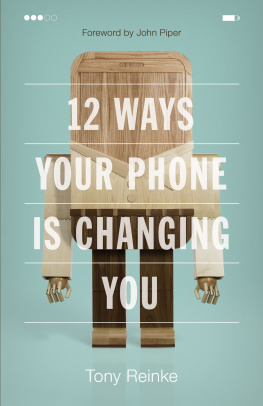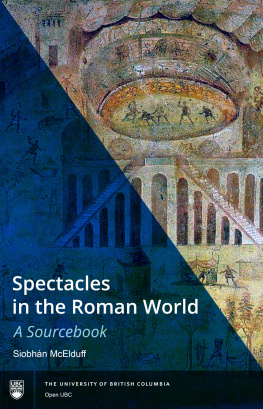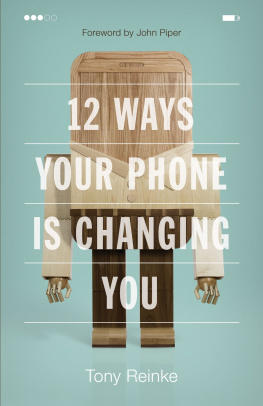Table of Contents
Landmarks
Our calling today is not to shut down professional athletics, like the early Christians who sought to end the bloodsports of Rome. Nor is our calling to shut down Hollywood studios, like the Puritans who shut down London theaters. We are called to recognize what is worthless and develop personal disciplines to resist the impulse to fill our lives with vain spectacles.
In sum, all my concerns are dwarfed by this one: boredom with Christ. In the digital age, monotony with Christ is the chief warning signal to alert us that the spectacles of this world are suffocating our hearts from the supreme Spectacle of the universe.
As Wi-Fi capacity expands, phone screens become sharper, televisions grow larger, small theaters claim the heart of our homes (in prominence, price tag, and priority), and we begin to live inside the world of our images. And while no spectacle in this world is like Infinite Jest or Medusas headone sight and we go comatose or turn to stoneover time, spectacles taken in unwisely will make our hearts cold, sluggish, and dull to unseen eternal delights.
And if any word of this book appears to be pushing some form of media legalism, let me be clear: the Holy Spirit does not convict us of our failing and faltering in this age of intrusive media so that we will sink into a marsh of despondency or get stuck in the sludge of perpetual guilt. Yes, weve all been digitally stupid with our time and attention. But the message of the cross tells us that we are free in Christ to live for something greater! We are free to center our lives on him, to enjoy him, and to glorify him by fixing our attention on things above, where we find our superior Spectacle, our greatest treasure.
Yes, we were made for play, made to laugh, made to sport, made to enjoy one another. But our play is always healthiest when our play is parenthetical, a slice of life shared with others. In the age of the spectacle, play becomes both boundless and isolating. Everything fun becomes mediated amusement, eye candy pushed into our conscious realm without end. Television, sex, politics, gaming, ads, social media, sportsnew spectacles endlessly erupt, spill over plays parameters, and submerge our entire conscious lives under the deluge of their totalizing aspirations. When we dont resist, when we cave to the subsidized interests of the spectacle makers, our lives become one endless carnival.
Soul boredom is a great threat, and when our souls become bored, we make peace with sin. New distractions, which promise to temporarily alleviate our boredom, hover in our ethical blindspots. Media discernment forces us to directly face our souls monotony. Calling out to our boredom, this media carnival, this surplus of digital stimuli, makes us indiscriminant with our hearts. Each of us must give ourselves away to someone or something. But in this media age, our loves and affections are frozen by the ice of vain amusements. Our hearts harden as we become nothing but consumers to be manipulated by the spectacle makers. We get trapped inside the age of spectacles, and we cannot give our lives away. Whoever would make himself a BFF of digital spectacles makes himself an enemy of God.
The Christians high calling is to guard the heart and its loves and desires. As followers of Christ in the media age, as we try to discern how much and how far , we center our lives on the glory of Jesus Christ.
The Christians battle in this media age can be won only by the expulsive power of a superior Spectacle. Christ is our safety and our guide in the age of competing spectacles, the age of social media. He is our only hope in life and death, in the age to come, and in this media age.
.Umberto Eco, Turning Back the Clock: Hot Wars and Media Populism (Wilmington, MA: Mariner, 2008), 7176.
.James 4:4.
.Prov. 4:23.
.Matt Chandler, Recovering RedemptionPart 11: Persevering in the Pursuit of Joy, youtube.com, November 10, 2013.
In the summer of 2013, as civil war tore apart his country, Bashar al -A ssad , the president of Syria, allegedly fired chemical weapons against his opposition. The attack reportedly killed eighteen hundred men, women, and children in Ghouta, Syria.
The UN investigated the massacre and confirmed that the attack came from within Syria and that significant quantities of military -g rade sarin gas were used in a well -p lanned indiscriminate attack targeting civilian -i nhabited areas, causing mass casualties.
Such ruthless butchery of his own citizens sparked global outrage and condemnation of Assad. Threats of retaliation escalated. America prepared to strike back. A few days after the slaughter, business tycoon Donald Trump took to Twitter to ask President Obama: What will we get for bombing Syria besides more debt and a possible long -t erm conflict? Lacking an international consensus, Obama stood down on military retaliation.
Thirteen hundred days later, and 150 miles to the north, Assad allegedly repeated his savagery, this time targeting Khan Sheikhoun, Syria, killing seventy -f our of his civilians with another air strike of sarin gas. Within sixty -t hree hours of the event, Donald Trump, Americas new president, fired fifty -n ine Tomahawk cruise missiles at a military airfield in Syria, turning one of Assads fighter jet fleets into a pile of scorched rubble.
How do we explain Trumps pacifism to eighteen hundred dead in 2013 in light of his hawkish response to seventy -f our dead in 2017? The short answer: pictures . Graphic pictures. More than the earlier episode, the latest action was captured by photographs of the childrenwith looks of surprise, fear, and confused suffocation frozen into their dead faces, then fixed into horrific images and videos that spread swiftly around the world.
Military officials collected the evidence and briefed Trump on the April 2017 attack. The images were ghastly. Men and women gasping for breath. Small children foaming at the mouth and in agony. The lifeless bodies of babies sprawled on the ground. When the briefing ended, the president dispatched his team to draw up options for a response. Those pictures could not be shaken. As he tried to go about his work, the images from Syria weighed on him, his aides said. He was disturbed by images of babies, some the ages of his grandchildren. He had to retaliate. And he did.
Trumps rapid response to this second Syrian attack reveals three powerful lessons about the visual spectacles of violence.
First, injustices against humanity captured by video need no translation. Pictures of dead children on sidewalks immediately captivate our eyes. Captions and descriptions may be typed in a foreign language, but the messages embedded in the images are universally spreadable.
Second, images are personally relatable. Videos and photographs of children on the street tap into the human heart of compassion. Once the images are shared and broadcasted, they etch the consciousness of all viewers. The images cannot be ignored.
Third, like never before, mobile digital cameras capture the optics of war crimes and spread them globally within seconds. A digital butterfly flaps its wings, and a digital tsunami of outrage gets unleashed on the other side of the planet within the hour. Within a few hours, collective rage can awaken war machines.
In the image -d riven age, nothing is easier to weaponize than the collective indignation birthed from an enraging event captured on film. We now see this played out with regularity on all sides of a conflict. A radical terror group will create a graphic propaganda video featuring the gruesome executions of prisonersshot, beheaded, burned, drowned, and documented for the world in HiDef color video. The shocked world responds to the images with hard talk from military brass and politicians on television talk shows.












